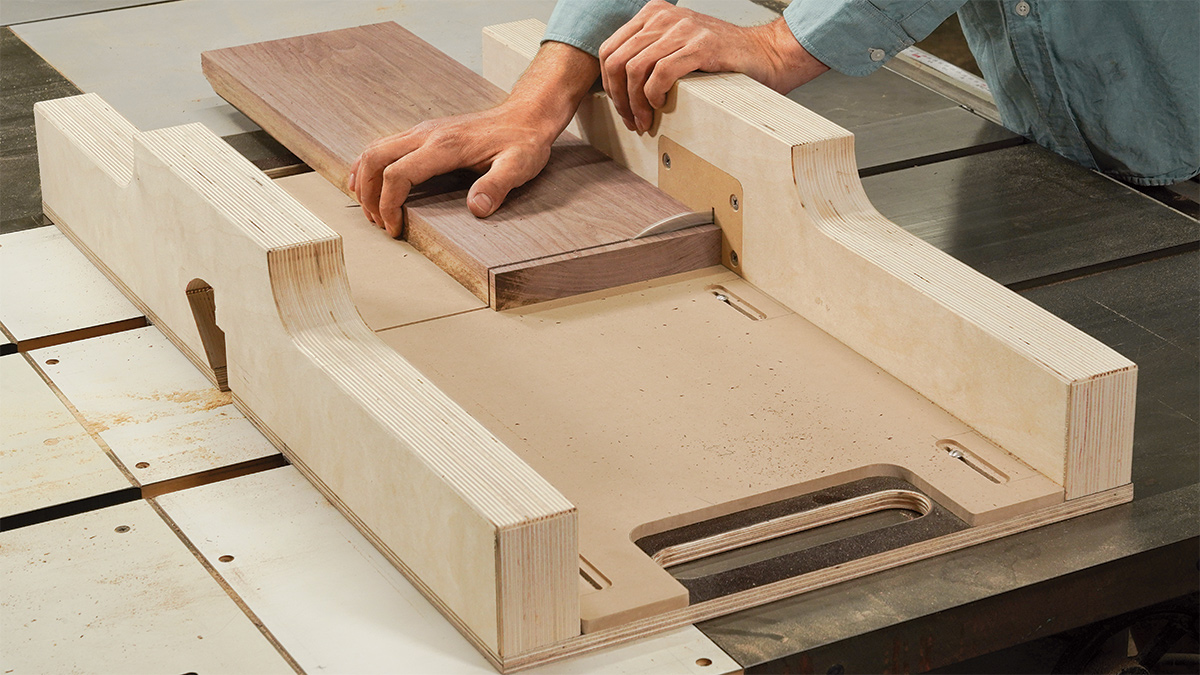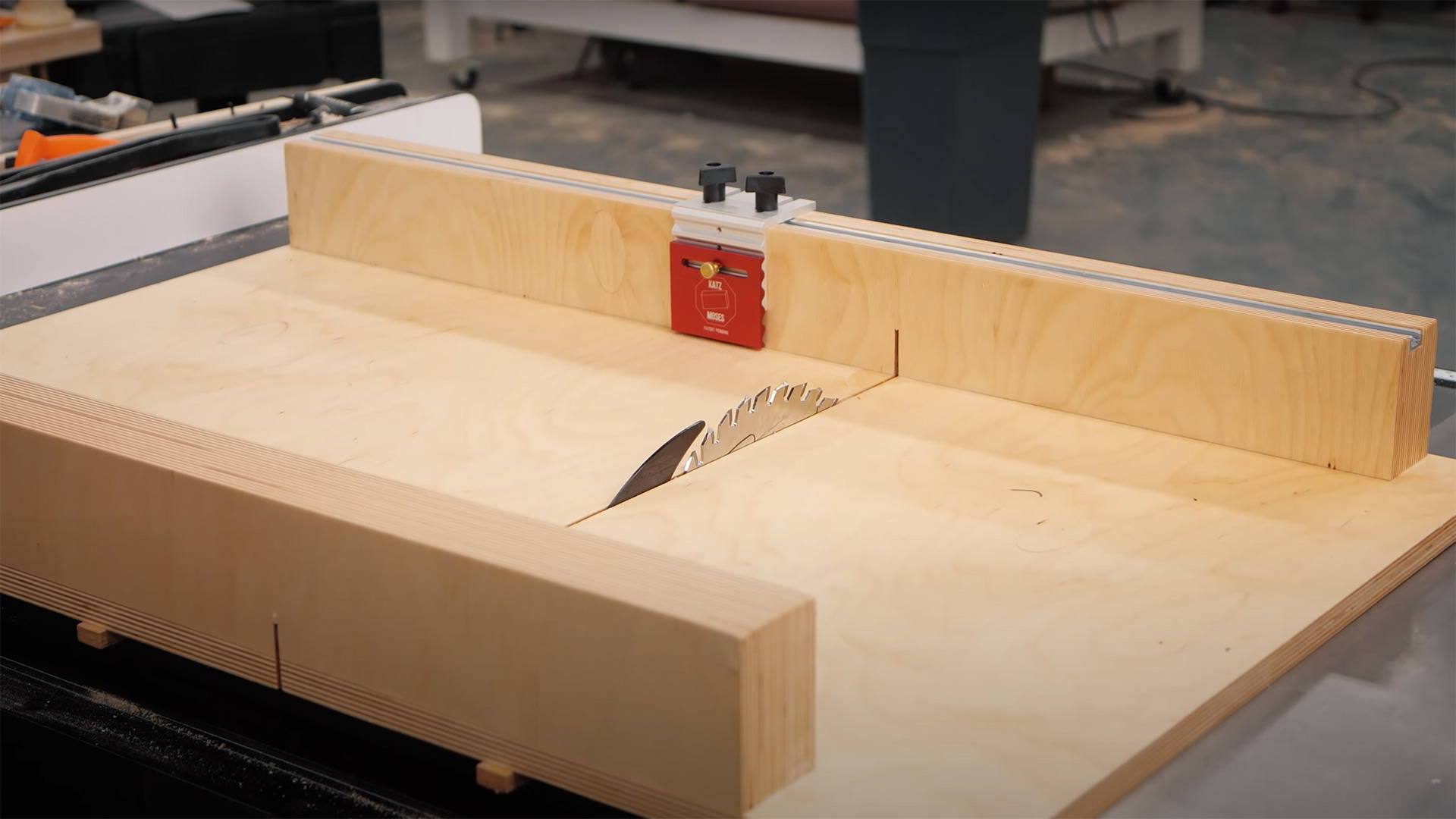Are you wondering how big a table saw crosscut sled should be? Well, you’ve come to the right place! A table saw crosscut sled is a handy tool that helps you make precise and accurate crosscuts on your table saw. But determining the ideal size for your sled can be a bit confusing. Don’t worry, though; I’ve got you covered!
Now, you might be thinking, “Why do I even need a table saw crosscut sled?” Great question! A table saw crosscut sled provides stability and control when cutting long or wide workpieces, ensuring clean and straight cuts. It eliminates the risk of kickback and makes your woodworking projects safer and more efficient. So, finding the perfect size for your crosscut sled is crucial!
But how do you determine the right size for your table saw crosscut sled? We’ll dive into that in just a moment. Stay tuned to discover the factors to consider and the steps to follow when deciding the dimensions of your crosscut sled. Let’s get started on this exciting journey of finding the perfect fit for your woodworking needs!

How Big Should a Table Saw Crosscut Sled Be?
A table saw crosscut sled is a must-have tool for any woodworker. It provides a safe and accurate way to make crosscuts on a table saw. But one question that often arises is: how big should a table saw crosscut sled be? In this article, we will explore the factors to consider when determining the size of a crosscut sled and provide tips on finding the right dimensions for your needs.
Factors to Consider When Determining the Size of a Table Saw Crosscut Sled
When deciding on the dimensions of your table saw crosscut sled, there are several factors to consider:
1) Workpiece Size
The first thing to consider is the size of the workpieces you typically work with. Measure the largest piece of material you commonly cut on your table saw and make sure your crosscut sled can accommodate it comfortably. Remember to account for the blade’s kerf, the thickness of the sled’s base, and any additional clearance you may require.
You should also consider the length of the workpieces. If you frequently cut long boards, you will need a crosscut sled that provides ample support and stability throughout the entire cut.
2) Fence Length
The fence on your crosscut sled plays a crucial role in ensuring accurate and square cuts. The length of the fence should be sufficient to provide support for the entire length of your workpiece. It should also be long enough to easily clamp and secure the workpiece against it.
Additionally, consider the width of the fence. A wider fence provides more stability and prevents the workpiece from tipping during the cut. However, it may limit the maximum width of the workpiece you can cut. Find a balance between stability and versatility based on your woodworking needs.
3) Blade Clearance
Another factor to consider when determining the size of a table saw crosscut sled is the blade clearance. The sled should be wide enough to safely pass the blade through without any interference. Pay attention to the size of your table saw blade and adjust the dimensions of the sled accordingly.
It’s also essential to leave enough space between the blade and the fence for the sled to glide smoothly without binding. This clearance ensures that the sled remains aligned and prevents any unwanted friction during the cut.
4) Storage Space
Lastly, it’s crucial to consider the storage space you have available for your table saw crosscut sled. If you have limited space in your workshop, you may need to design a sled that is compact and easy to store. Consider foldable or removable components that allow you to save space when the sled is not in use.
Benefits of Using the Right Table Saw Crosscut Sled Size
Using the right size for your table saw crosscut sled offers several benefits:
1) Increased Safety
A well-sized crosscut sled provides stability and eliminates the risk of kickback, ensuring safer operation on the table saw. It allows you to maintain control over the workpiece and keep your hands a safe distance from the blade.
2) Improved Accuracy
With a properly sized crosscut sled, you can achieve precise and square cuts consistently. The sled acts as a guide, reducing the chances of errors or misalignments during the cutting process. This accuracy is especially crucial when working on projects that require precise measurements and joinery.
3) Enhanced Efficiency
A table saw crosscut sled that fits the workpieces you commonly use allows for faster and more efficient work. Instead of constantly adjusting or repositioning the workpiece, you can quickly line it up against the fence and make accurate cuts in a single pass.
Tips for Finding the Right Dimensions for Your Table Saw Crosscut Sled
1) Measure Your Workpieces
Before designing or building a table saw crosscut sled, measure your most commonly used workpieces. Consider their dimensions and factor in any allowances necessary for the blade kerf and sled clearance. Use these measurements as a guide to determine the dimensions of your sled.
2) Research Existing Sled Designs
There are numerous resources available online that provide plans and templates for table saw crosscut sleds. Take the time to research and analyze different designs, paying attention to the dimensions used by experienced woodworkers. This can give you a starting point for your own sled’s dimensions.
3) Test and Iterate
Once you have built your crosscut sled, test it out and evaluate its performance. It’s possible that you may need to make some adjustments or modifications to achieve the desired results. Don’t be afraid to iterate and refine your sled until it meets your specific needs.
Conclusion
Choosing the right size for your table saw crosscut sled is crucial for safe and accurate woodworking. Consider the size of your workpieces, the length and width of the fence, the blade clearance, and the available storage space. By finding the optimal dimensions for your needs and taking advantage of the benefits of a well-sized sled, you can enhance both your safety and the quality of your woodworking projects.
Key Takeaways: How Big Should a Table Saw Crosscut Sled Be?
2. A general guideline is to make the sled at least as wide as your table saw’s fence and long enough to accommodate the longest workpiece you anticipate cutting.
3. Taking into consideration the available space in your workshop, ensure that the sled is not too big or cumbersome to handle comfortably.
4. It’s important to strike a balance between a large enough sled for stability and accuracy and a size that allows easy maneuverability.
5. Additionally, consider the material and construction of the sled to ensure it is sturdy and durable enough to withstand the pressure and forces exerted during use.
Frequently Asked Questions
Welcome to our FAQ section on table saw crosscut sleds. Here, we will address common queries about determining the size of your crosscut sled to ensure accurate and efficient woodworking. Whether you’re a beginner or an experienced woodworker, these answers will provide you with valuable insights for your projects.
1. What factors should I consider when determining the size of my table saw crosscut sled?
When determining the size of your table saw crosscut sled, there are a few factors to consider. First, think about the size of the material you typically work with. Your sled should be wide enough to support the workpiece and keep it stable during the cut.
Secondly, consider the size of your table saw and the available space in your workshop. The crosscut sled should fit comfortably on the table, allowing you to maneuver the sled smoothly and effortlessly.
2. How do I determine the length of my table saw crosscut sled?
The length of your table saw crosscut sled depends on the maximum length of the workpieces you commonly handle. Measure the distance from the front edge of your table saw’s blade to the furthest end of your intended workpiece. Add a few extra inches to ensure stability and support throughout the cut.
It’s essential to account for any blade’s protrusion beyond the table’s surface. This extra length prevents the workpiece from binding against the blade guard and ensures a safe and accurate cut.
3. Should the width of my table saw crosscut sled match the width of my table saw’s rip fence?
While it’s not necessary for the width of your table saw crosscut sled to precisely match the width of your table saw’s rip fence, it can be beneficial. A sled that aligns with the rip fence provides additional support and stability, especially when cutting wide or long workpieces.
However, you can also design your crosscut sled to extend beyond the rip fence for larger workpieces. Just make sure that the sled is still securely fastened and maintains a smooth sliding operation.
4. How thick should the base of my table saw crosscut sled be?
The base of your table saw crosscut sled should typically be at least 3/4 inch thick to ensure stability and prevent flexing during use. Using a thicker base, such as 1 inch, can provide even more rigidity and reduce the risk of warping over time.
A sturdy base is crucial to maintaining accurate and repeatable cuts. Consider using a durable material like plywood or medium-density fiberboard (MDF) for your sled’s base, which offers both stability and durability.
5. Can I make multiple table saw crosscut sleds of different sizes?
Yes, you can create multiple table saw crosscut sleds of different sizes to accommodate various woodworking needs. Having sleds of different sizes allows for greater versatility when working with different types and sizes of materials.
For example, you may want a small sled for precise and intricate cuts on smaller workpieces, while a larger sled can handle bigger materials with ease. Just ensure that each sled is carefully designed, aligned, and secured for safe and accurate operation.

Summary
Here’s what you need to know about how big a table saw crosscut sled should be:
A crosscut sled is a handy tool for safely making precise cuts on your table saw. It should be large enough to support your workpiece and have a longer reach than your average miter gauge. A good rule of thumb is to make it about twice as wide as your saw’s tabletop and about 12 inches longer than your longest anticipated cut. This will give you enough room to securely hold the wood and prevent it from wobbling or sliding during the cut. Remember to leave space for your saw blade to move smoothly through the sled’s slot, and you’re good to go!
Having a bigger crosscut sled doesn’t always mean better. You want it to fit comfortably on your table saw without hindering its operation. Make sure it doesn’t interfere with the movement of the blade guard or the fence. Keep in mind that the size may vary depending on the types of projects you work on most frequently. A smaller sled can be ideal for small or intricate cuts, while a larger one may be better for larger materials. Find the right size that works for you and get ready for some accurate and safe table saw cuts!
